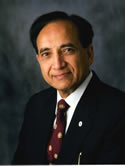| Abstract: |
Purpose Elevated expression of eukaryotic protein synthesis initiation factor 4E (eIF4E) in histologically cancer-free margins of resected head and neck squamous cell carcinomas (HNSCCs) is mediated by mammalian target of rapamycin complex 1 (mTORC1) and has been associated with increased risk of disease recurrence. Preclinically, inhibition of mTORC1 with everolimus sensitizes cancer cells to cisplatin and radiation. Methods and Materials This was single-institution phase 1 study to establish the maximum tolerated dose of daily everolimus given with fixed dose cisplatin (30 mg/m2 weekly × 6) and concurrent intensity modulated radiation therapy for patients with locally and/or regionally advanced head-and-neck cancer. The study had a standard 3 + 3 dose-escalation design. Results Tumor primary sites were oral cavity (4), salivary gland (4), oropharynx (2), nasopharynx (1), scalp (1), and neck node with occult primary (1). In 4 of 4 cases in which resected HNSCC surgical pathology specimens were available for immunohistochemistry, elevated expression of eIF4E was observed in the cancer-free margins. The most common grade ≥3 treatment-related adverse event was lymphopenia (92%), and dose-limiting toxicities (DLTs) were mucositis (n=2) and failure to thrive (n=1). With a median follow up of 19.4 months, 2 patients have experienced recurrent disease. The maximum tolerated dose was everolimus 5 mg/day. Conclusions Head-and-neck cancer patients tolerated everolimus at therapeutic doses (5 mg/day) given with weekly cisplatin and intensity modulated radiation therapy. The regimen merits further evaluation, especially among patients who are status post resection of HNSCCs that harbor mTORC1-mediated activation of eIF4E in histologically negative surgical margins. © 2013 Elsevier Inc. |


















